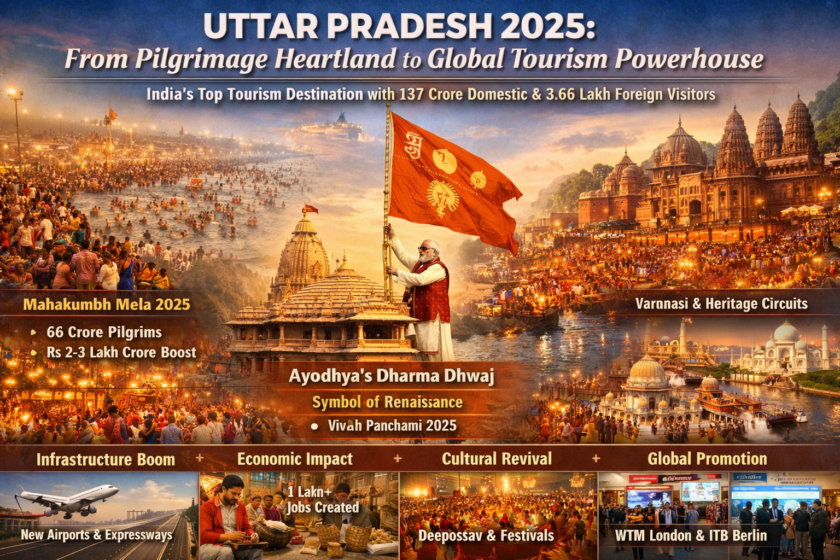New Delhi: India is a land of rich cultural heritage and history, and its museums are treasure troves showcasing this diversity. From ancient artifacts and historical documents to modern art, India’s museums offer a deep dive into its multifaceted history. Here are some of the best museums in India that are worth visiting.
1. The Indian Museum, Kolkata
Founded in 1814, the Indian Museum in Kolkata is the oldest and one of the largest museums in India. It houses an extensive collection of artifacts, including ancient sculptures, coins, fossils, and paintings. The museum’s six sections – Art, Archaeology, Anthropology, Geology, Zoology, and Economic Botany – offer a comprehensive glimpse into India’s rich cultural and natural heritage. Key highlights include the Ashoka Pillar, Egyptian mummies, and the Bharhut Gallery with Buddhist relics.

2. National Museum, New Delhi
The National Museum in New Delhi is one of India’s most prominent museums, established in 1949. It boasts an extensive collection that spans 5,000 years of Indian history. The museum’s galleries cover various periods and regions, featuring artifacts from the Indus Valley Civilization, exquisite Mughal miniature paintings, and the grand Chola bronzes. The museum also includes international pieces, such as the Central Asian antiquities and the fascinating Silk Route Gallery.
3. Chhatrapati Shivaji Maharaj Vastu Sangrahalaya (CSMVS), Mumbai
Formerly known as the Prince of Wales Museum, CSMVS is a magnificent Indo-Saracenic building set amidst lush gardens in South Mumbai. Opened in 1922, it holds an impressive collection of over 50,000 artifacts. The museum is particularly renowned for its collection of ancient Indian sculptures, decorative arts, European paintings, and Chinese and Japanese artifacts. Notable exhibits include the ivory carvings and the arms and armor section, which offer insights into India’s rich craftsmanship and martial history.
4. Salar Jung Museum, Hyderabad
The Salar Jung Museum, situated on the southern bank of the Musi River in Hyderabad, is one of the three National Museums of India. It houses the personal collection of Mir Yousuf Ali Khan, Salar Jung III, and features a diverse array of artifacts from different parts of the world. The museum’s vast collection includes Persian carpets, Mughal miniatures, European paintings, and Japanese sculptures. The Veiled Rebecca, a marble statue by Italian sculptor Giovanni Maria Benzoni, is a standout piece that draws many visitors.
5. Victoria Memorial Hall, Kolkata
The Victoria Memorial, a majestic white marble building, is a significant landmark in Kolkata. Built between 1906 and 1921, it is dedicated to the memory of Queen Victoria. The museum inside the memorial offers a comprehensive view of the British colonial era in India through its vast collection of paintings, manuscripts, and other memorabilia. The Royal Gallery, showcasing the works of British artists, and the Calcutta Gallery, depicting the city’s history, are major attractions.
6. Government Museum, Chennai
Also known as the Madras Museum, this is the second oldest museum in India, established in 1851. It is famous for its rich archaeological and numismatic collections. The museum complex includes several buildings, such as the National Art Gallery, the Children’s Museum, and the Contemporary Art Gallery. Highlights of the museum include the Bronze Gallery, showcasing South Indian bronzes, and the Amaravati Gallery, which houses the remains of the ancient Buddhist stupa from Amaravati.

7. Napier Museum, Thiruvananthapuram
The Napier Museum, named after the former Governor General of Madras, Lord Napier, is a 19th-century architectural marvel located in the capital of Kerala. The museum’s unique Indo-Saracenic structure, designed by Robert Chisholm, is as much an attraction as its contents. It features an array of historical artifacts, including ancient bronze idols, ivory carvings, and a temple chariot. The museum also houses a zoological garden and an art gallery featuring works by Raja Ravi Varma.
8. Dr. Bhau Daji Lad Museum, Mumbai
Situated in Byculla, Mumbai, this is the city’s oldest museum, established in 1855. Originally called the Victoria and Albert Museum, it was renamed in honor of Dr. Bhau Daji Lad, a prominent Indian scholar and philanthropist. The museum showcases the history and culture of Mumbai through a variety of exhibits, including dioramas, photographs, and models. Highlights include the exquisite pottery and clay models that depict the life of the people in the 19th century.
9. Calico Museum of Textiles, Ahmedabad
The Calico Museum of Textiles is one of the most famous textile museums in the world. Established in 1949 by the Sarabhai Foundation, it is housed in a beautiful old Haveli. The museum’s collection includes a vast range of textiles, from exquisite Mughal carpets and traditional Indian fabrics to contemporary Indian textiles. The museum also has a rich collection of religious paintings and South Indian bronzes.
10. National Rail Museum, New Delhi
For railway enthusiasts, the National Rail Museum in New Delhi is a must-visit. Spread over 11 acres, the museum showcases the rich heritage of Indian railways. The outdoor exhibits include a fascinating array of steam locomotives, carriages, and saloon cars used by the erstwhile maharajas. The indoor galleries feature photographs, documents, and miniature models tracing the history and evolution of rail transport in India.
In conclusion, India’s museums are a reflection of its diverse and rich cultural heritage. Whether you’re interested in ancient artifacts, colonial history, or modern art, there is something for every history and culture enthusiast. These museums not only preserve India’s past but also educate and inspire future generations.









